Whether you are a beginner or experienced tank owner, you will know that adding carpet plants is important. Not only will they create a luscious environment that looks beautiful, but plants also help your aquarium stay clean.
It’s crucial to choose the right aquarium plant and know how to care for them. There are also a variety of factors to consider, from water conditions to compatibility.
Today, we will cover the essentials of aquarium plants and look at some of the best ones for your freshwater tank.
Table of Contents
Why Use Carpet Plants for Your Aquarium
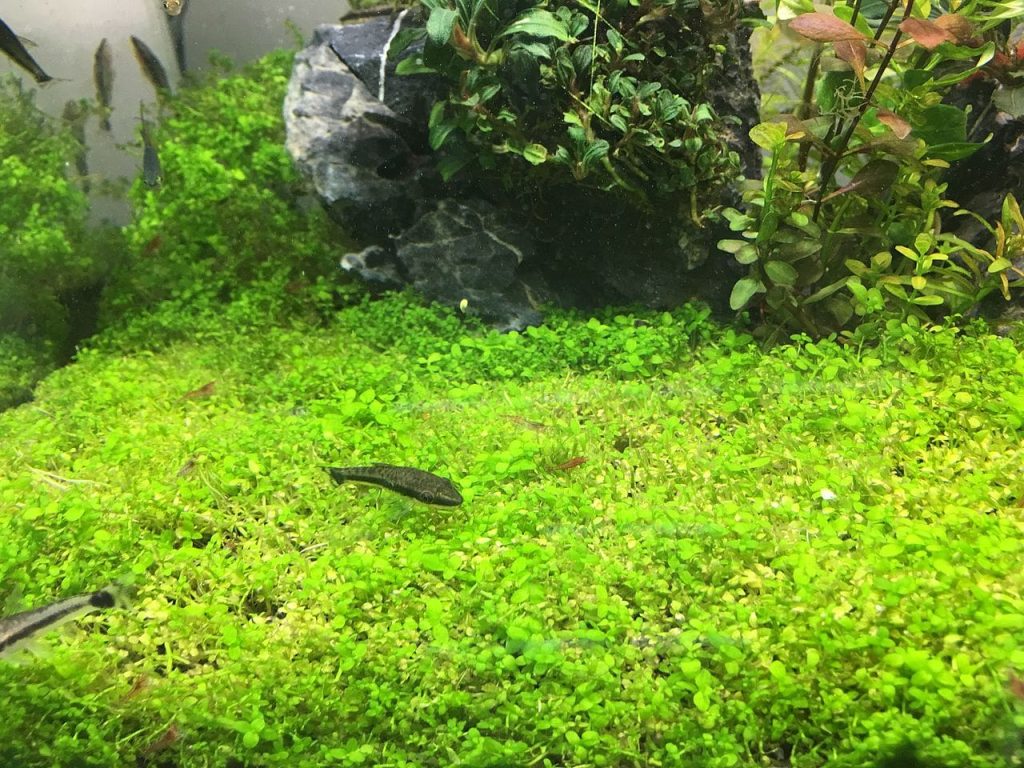
Before anything else, it is helpful to know the benefits of having carpet plants. A lot of new aquarium owners may feel daunted by the thought of carpeting plants, but there is actually nothing to worry about.
In essence, carpet plants refer to the plants that grow on the aquarium substrate, thus forming the “carpet” or base in this glass-walled ecosystem. But why should you use carpet plants in your aquarium?
For one, they provide an excellent environment for your fish and other aquatic creatures. This is even more relevant for the bottom dwellers such as shrimps, as the carpet provides shelter and a hiding place from the bigger fishes.
Live plants can also become a cover for fish eggs and fry so that the fish can breed naturally and safely.
As they help remove toxic nitrates from the tank, these plants will keep the water cleaner for longer periods of time. That means you won’t need to change the water as often!
Of course, we haven’t forgotten the most obvious reason for cultivating a lush carpet: the aesthetic values. Carpet plants will enhance your aquarium as a decoration.
How to Choose The Right Aquarium Carpet Plants
Keeping aquarium plants does come with its own set of challenges, not that these should discourage anyone from trying. Before picking the right one for your tank, there are several factors to keep in mind.
Pay attention to the water conditions because some plants thrive well in an acidic pH, while others prefer neutral to alkaline waters. Some species will also need proper lighting and additional CO2 supplementation, whereas others are suitable for low light and tech environments.
Do you have spare time for these special maintenances? That is also something to take into consideration!
Don’t forget that almost every plant will need to be trimmed occasionally. But some require more care and should be ensured that there is no waste stuck in them.
Finally, it is also important to think about the compatibility of the plants and fish. This shouldn’t be a problem in most cases. But try to keep more delicate plants away if there are creatures with curious or more aggressive tendencies in the tank.
10 Best Aquarium Carpet Plants for Your Freshwater Tank
Without further ado, let’s jump into the top 10 aquarium carpet plants that you can get for your freshwater tank!
1. Dwarf Hairgrass (Eleocharis Parvula)
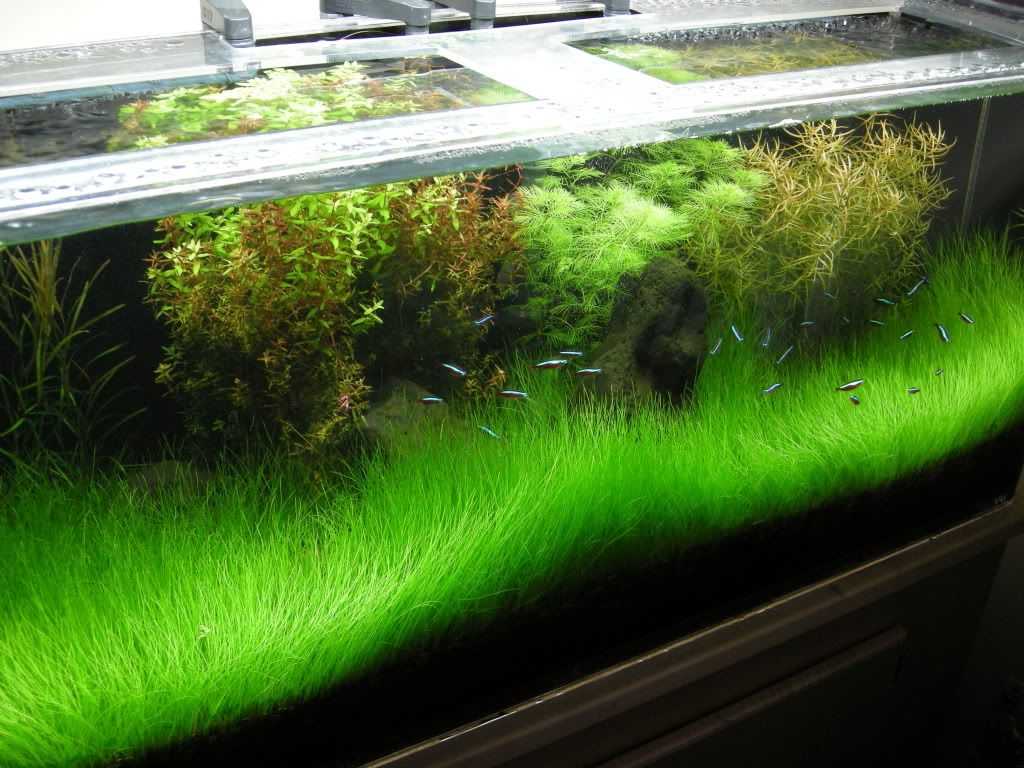
The Eleocharis Parvula has many known names, including Dwarf Spikerush and Dwarf Hairgrass.
It’s one of the most popular carpeting plants and can grow easily on caves or other structures. Therefore, it’s great to cover up any empty spaces in the substrate.
This salt-tolerant plant can be submerged or emersed, although it does grow faster when above water.
While this species can survive with low lighting, they need moderate to high light levels to carpet well. They will get most of the nutrients from roots instead of the water itself. Also, make sure to keep it trimmed below 2 inches too!
It’s not advisable to keep Dwarf Hairgrass with fishes that tend to dig into substrate. However, you can plant this with fish like tiger barb, which may graze on it occasionally. Not to mention that it’s excellent for breeder tanks, as this plant provides great hiding spots for eggs and fry.
2. Java Moss (Taxiphyllum Barbieri)
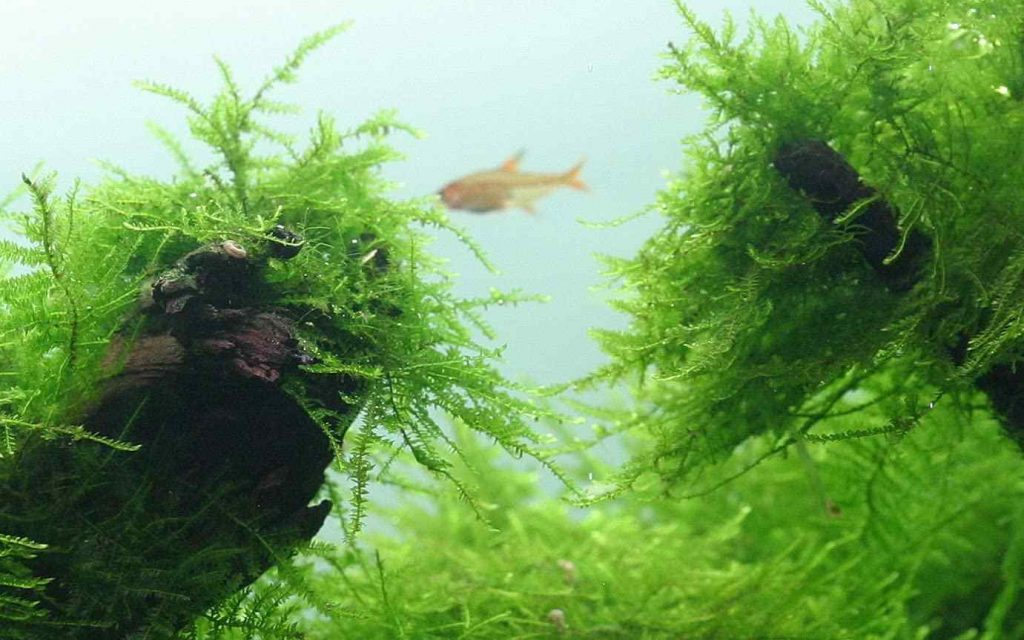
If you’re looking for an impossibly easy carpet plant, the Java Moss will be your new best friend. It’s pretty much the best choice for beginners and is very versatile. You can use it attached to rocks, as a midground plant, or afloat in the tank.
The best thing about Java Moss is its relatively low maintenance. There’s no need to supplement CO2 or fertilization to keep it thriving. It can even survive in low light conditions.
Its naturally thick and luscious growth makes it an excellent breeding ground, as well as a spot for eggs and fry to hide in. Just cut pieces of Java Moss and lightly bury them with the substrate. It really doesn’t get any easier than that!
3. Crystalwort (Riccia Fluitans)
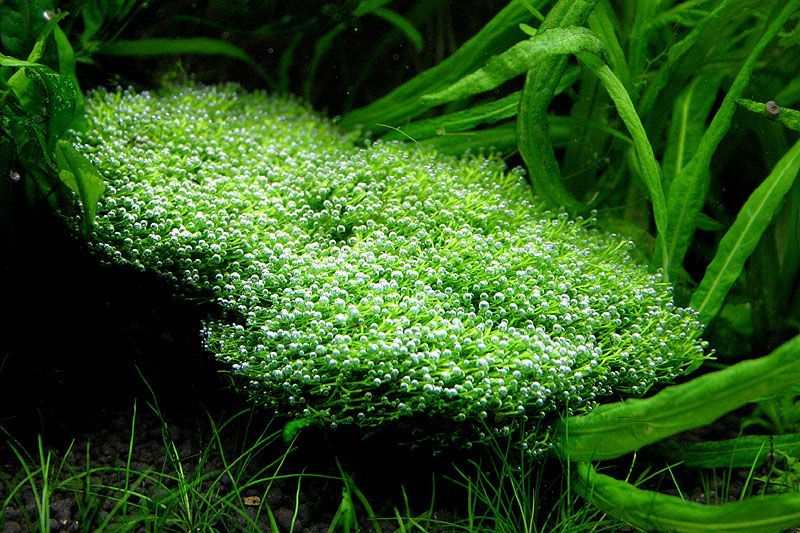
On the other hand, Crystalwort can be less suitable for beginners as it requires more specific conditions. But that doesn’t mean that it’s hard to grow or impossible to maintain! As long as you provide what the plant needs, then your Crystalwort will thrive.
Generally, you will find this species afloat. It requires a very bright environment if you intend to grow it on the carpet, with at least 2 watts of light for each gallon of water.
Crystalwort does not get its nutrients from the substrate, so it’s important to supplement extra CO2 and nutrients in the water.
When kept in a darker tank, this plant tends to shade itself and develop brown layers. You will need to regularly trim these to keep them neat and healthy. Meanwhile, it grows fast in a rich condition and may still require regular trimming.
4. Pellia Moss (Monosolenium Tenerum)
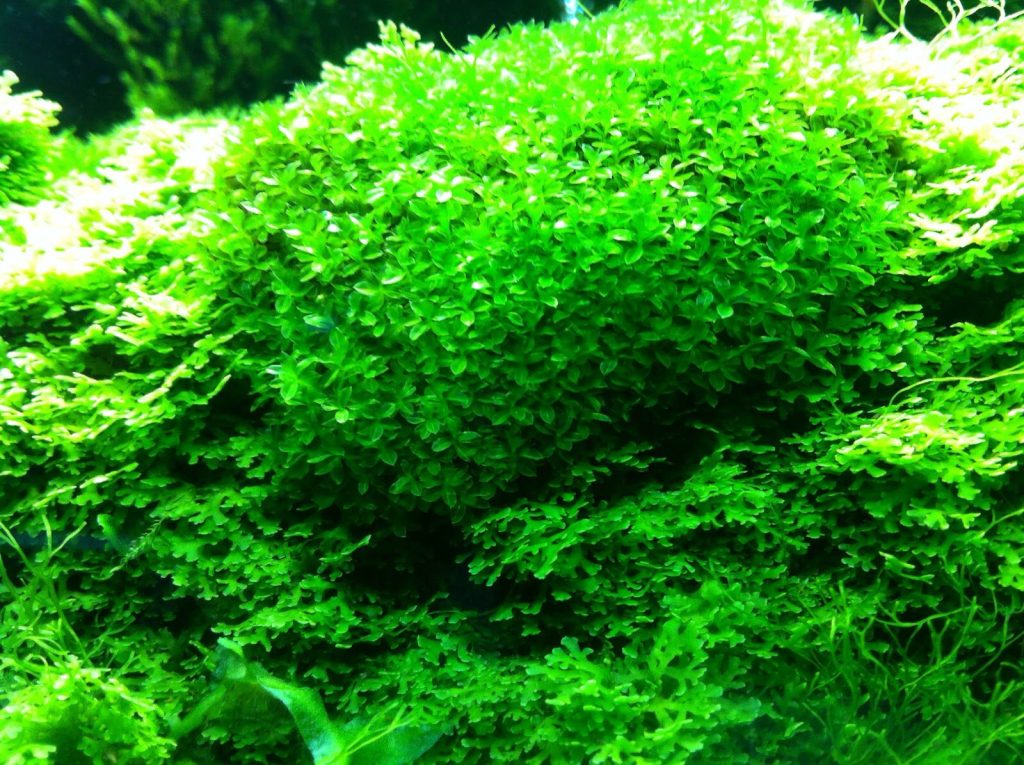
Monosolenium tenerum, sometimes also known as Pellia Moss, may not be as popular as the other carpet plants on this list. However, it’s quite easy to maintain and can grow emersed. This makes it a great choice for a Paludarium tank, where you can have both terrestrial and aquatic plants!
In terms of looks, Pellia moss is quite similar to Crystalwort but is much larger and darker. It’s also less demanding and does not grow as fast.
Another great thing about this species of carpet plant is that it takes nutrients from the water column. If your substrate is not filled with nutrients, then Pellia moss could be the best choice for you. Although, note that it is quite brittle and can break easily.
5. Christmas Moss (Vesicularia Montagnei)
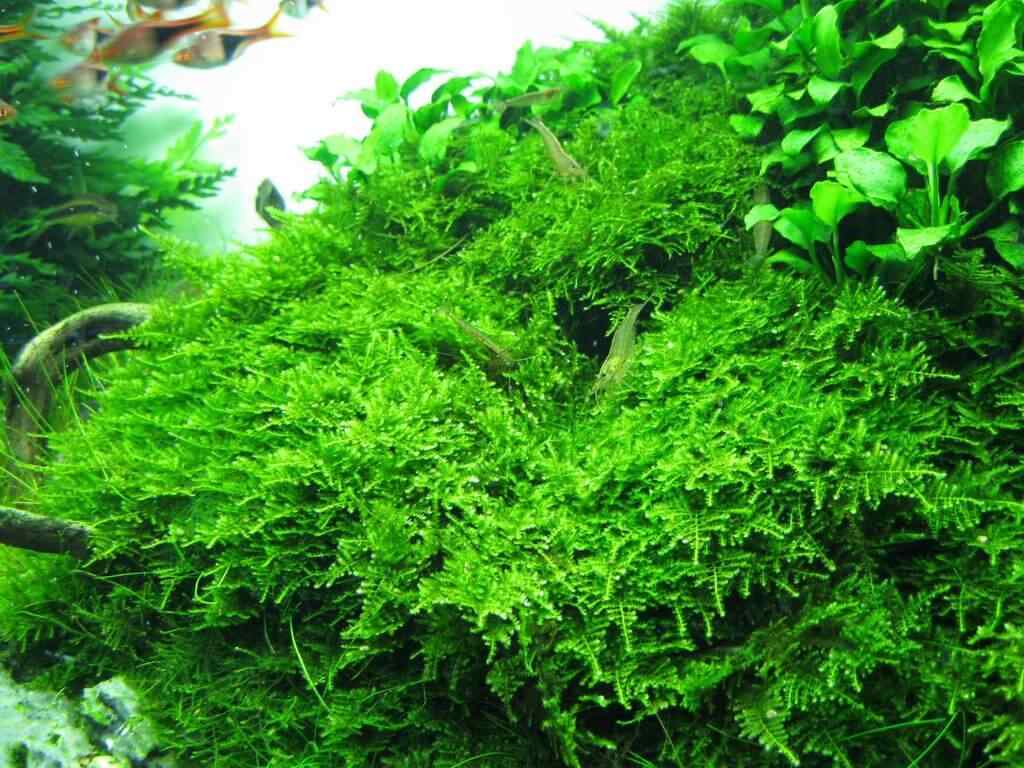
Although it shares the name “moss” with Java Moss, Christmas Moss is a bit different. It grows much more slowly and is not as tough. Its unique appearance resembles fir trees, which is why it’s called Christmas Moss.
Many aquarium owners use this species to carpet the substrate, rocks, or driftwood. It can even be used as a sort of canopy, while its ability to grow emersed makes it equally suitable for a paludarium.
When keeping Christmas Moss in your tank, it is best to have a medium to the high light environment. However, it doesn’t need an enriched substrate to thrive. While supplementing them with carbon dioxide may be useful, it is not necessary at all.
6. Dwarf Baby Tears (Hemianthus Callitrichoides)

Our next carpet plant does not grow well without ample amounts of CO2, which means you will need some technology in your aquarium.
They’re sensitive to temperature and must be kept in waters of around 75°F. Yes, Dwarf Baby Tears can be relatively difficult to grow and maintain.
Don’t let these steer you away from this plant species. As long as it is provided with enough nutrients and planted in clumps, they will thrive. Also, make sure that you plant them with a few centimeters in between.
Dwarf Baby Tears is probably one of the smallest aquarium plants, with leaves that grow only several millimeters long. This means that it will take some time to thicken. But this also makes the species extremely gorgeous for compact carpets, rocks, and driftwoods.
7. Dwarf Sagittaria (Sagittaria subulata)

Sagittaria subulata, or more popularly known as Dwarf Sagittaria, is a pretty versatile carpet plant. They are suitable in either hard, alkaline, or slightly brackish waters. It can grow in a variety of conditions, although this will affect how healthy and thriving they are.
In a bright environment with an enriched substrate, Dwarf Sagittaria may grow in clumps. This is because it doesn’t need to grow toward the light source. The resulting carpet is dense, between 3 and 5 inches tall.
On the other hand, lower light conditions will cause the plant to grow up to 12 inches. It won’t be a good carpeting plant in this case. Meanwhile, Dwarf Arrowhead, which is from the same plant family, will stay small in any condition. But it will not survive in low lighting.
8. Little Star (Pogostemon Helferi)

You may also want to consider getting Little Star, a recent newcomer in the aquascaping world. Originating in Southeast Asia, its leaves are crinkled and flaunt a star-like pattern throughout.
For this plant species, it is best to keep the light as high as you can so they can remain compact. However, it is still able to tolerate darker environments. It’s also versatile in a variety of water conditions, but chemical fluctuations may trigger browning and, in some cases, death.
Supplemental carbon dioxide is highly recommended if you want good growth. Otherwise, Little Star may grow much more slowly and less vigorously.
One thing to note is to keep it from Mollies and snails. Because their leaves are very soft, these creatures will be inclined to keep munching on them.
9. Copragrass (Lilaeopsis Brasiliensis)

You may have heard of Copragass by its other name: Brazilian Micro Sword. This is an excellent carpet plant to put in your freshwater tank if you want a grassy lawn.
While it can thrive in brackish waters, it’s still quite challenging to maintain.
This plant requires a lot of light, CO2 supplementation, and enriched substrate. Make sure that the substrate is teeming with nutrients through root tablets or organics so Copragrass can grow rapidly.
You have to be careful when choosing other large plants, so they won’t shade the Copragrass. This may cause their growth to be hindered and you will not get a fully carpeted tank.
Although, note that it takes time for these plants to establish themselves. Our best advice is to plant them in tiny clumps across the aquarium base.
10. Blyxa Japonica
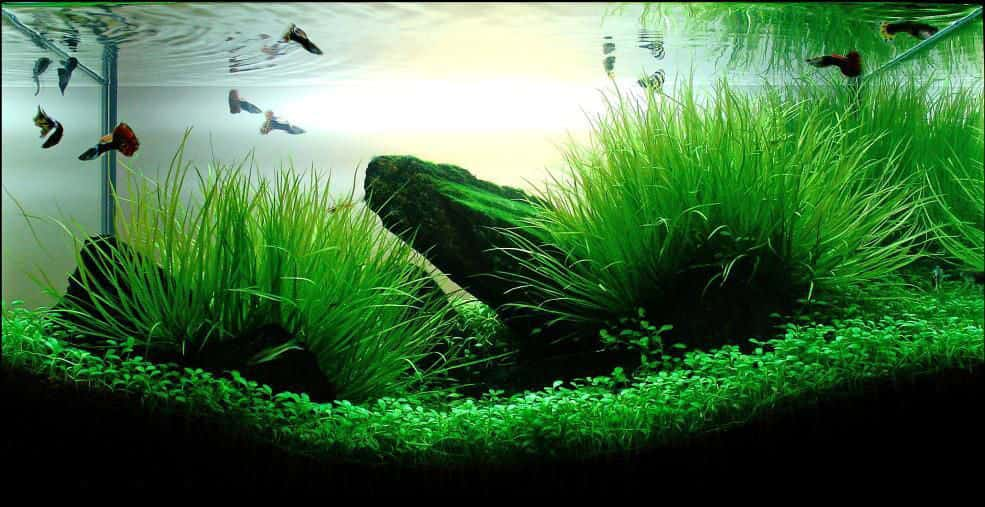
Blyxa Japonica also proves a little tricky to keep healthy. But its shrubby nature and ability to grow taller than most carpet plants make it the perfect choice if you want a thick and dense carpet.
It’s generally found in the tropical areas of Asia but has become especially popular in the last 5 to 10 years. In nature, this species prefers slow-moving, shallow waters.
The growth rate is only medium at best, and Blyxa Japonica may not spread very well. Therefore, it’s crucial to plant them in tight groups before they can eventually populate the substrate.
When it comes to water parameters, you should make sure that this plant is only placed in acidic waters with a nutrient-filled substrate. Don’t forget to supplement the tank with enough carbon dioxide for it to grow, as well as extremely high lighting!
When there is not enough light, this plant species will grow abnormally tall as it struggles to find it.
In its best conditions, however, Blyxa japonica is a truly magnificent carpet plant. Not to mention that it will have an enchanting reddish hue, which will provide a unique pop of color to your aquarium landscape!
Summary
At the end of the day, aquascaping is just like any other hobby that requires time and experience to become good at. Arranging and maintaining a healthy carpet plant in your tank is important, but it should be something you still enjoy too.
We hope this guide has been useful in your research so that you can choose the best aquarium carpet plants for your tank.
Remember that the more you learn, the better and easier it will be to landscape the aquarium carpet with beautiful, thriving plants. Good luck!






